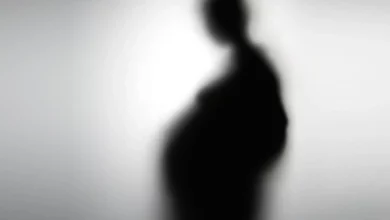How Artists Are Breaking the Taboos Around Depicting Birth

Not long after completing “The Dinner Party” (1974-79), her monumental installation dedicated to historical women, the artist Judy Chicago began researching depictions of birth in Western art — only to discover there were almost none. “If men had babies, there would be thousands of images of the crowning,” she said. In an effort to fill this void, she went straight to the source. She witnessed a live birth — the San Francisco-based designer Karin Hibma agreed to let Chicago sketch in the delivery room — and sent detailed questionnaires to more than 100 mothers. (Sample questions: Why did you want to have a baby? What physical changes have become permanent?) Part of her resulting work, “The Birth Project” series (1980-85), made up of painted, woven and embroidered images of women in labor, is currently on view at Chicago’s retrospective at the New Museum in New York. Many of the images are epic in tone and size: Breasts become mountains and rivers flow from between open legs. Chicago was, as she later wrote, “building a form language almost ‘from scratch,’” one that linked the act of birth to divine creation. But to this day, according to Massimiliano Gioni, one of the show’s curators, the series has never been shown in full.
Birth is an experience shared, in one way or another, by every person who has ever lived. But beyond pictures of the Virgin Mary, images of pregnancy are largely absent from the Western canon; images of labor, practically nonexistent. Historically, birth was so dangerous — the fatality rate in the 16th and 17th centuries has been estimated to be as high as 1.5 percent — that depicting a pregnant person was seen as inauspicious. Delivery was widely considered far too bloody for public consumption. And, of course, most artists and gallerists were men and therefore at least one degree removed from the process. As a result, perhaps the earliest known modern image of a birth in visual art is Frida Kahlo’s “My Birth,” painted in 1932.
But over the past decade, a mass of images has begun to emerge and institutions have become more willing to show them. “There is a younger generation of curators — male and female — who have developed an interest in the subject,” Chicago, now 84, says. Just as motherhood has, in recent years, become a fashionable topic for exhibitions (including “Mother!” at Denmark’s Louisiana Museum of Modern Art in 2021) and art books (among them “The Baby on the Fire Escape” by Julie Phillips, published in 2022), so too have discussions about birth entered museums and galleries. In the years directly before and after the Supreme Court’s 2022 decision to revoke the constitutional right to abortion, this has proved especially true: Early last year, the Scottish painter Caroline Walker exhibited monumental delivery scenes in London informed her by residency at the city’s University College Hospital maternity ward; the Polish artist Agata Słowak’s solo show at Fortnight Institute in New York this spring included a painting of a naked figure birthing a red demonlike creature; and at Pace Geneva this fall, the American artist Loie Hollowell showed new paintings from her “Splitting Orbs” series, which depict an abstracted dilating cervix. These images, presented at a time when women’s bodies and lives are under threat, register as a form of protest, even if they weren’t conceived that way. How, they seem to ask, could anyone be forced to go through the experience of being broken open against their will?





